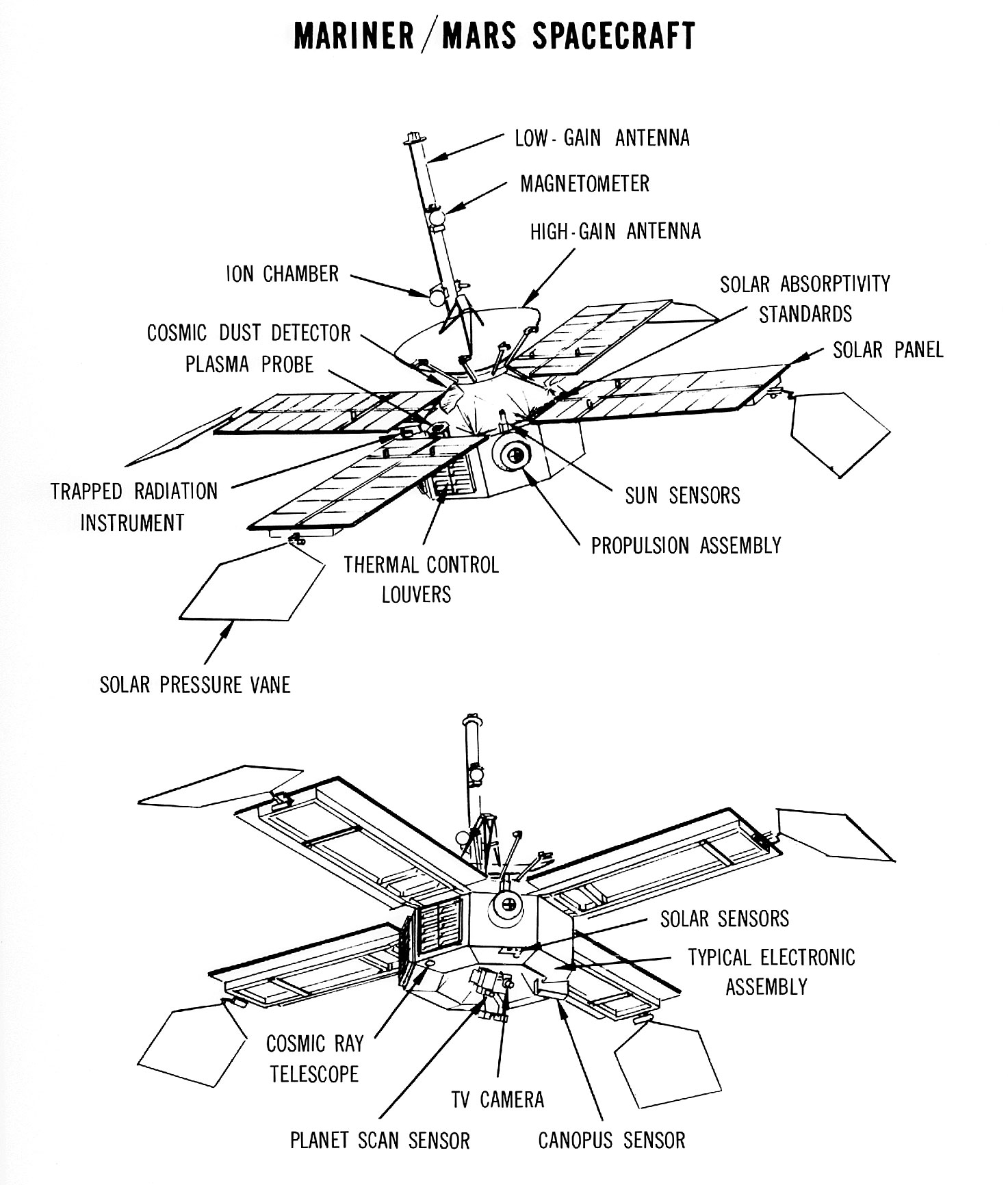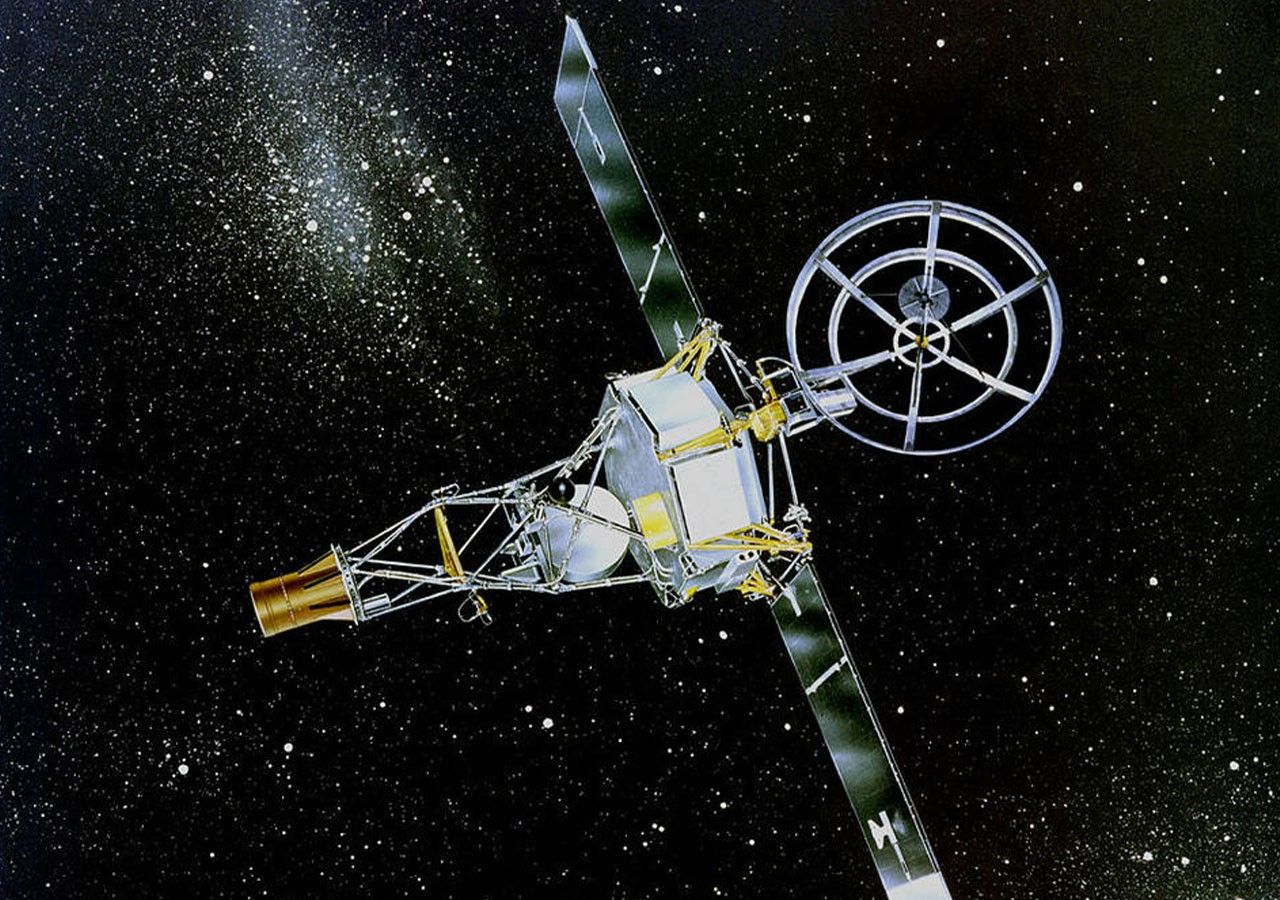Mariner 5
Type
Launch
Target
status
What was Mariner 5?
Originally built as a backup to the successful Mariner 4 mission to Mars in 1965, Mariner 5 was modified to fly by Venus. The spacecraft's flight path after its Venus encounter brought it closer to the Sun than any previous mission at the time.
| Nation | United States of America |
| Objective(s) | Venus Flyby |
| Spacecraft | Mariner 67E / Mariner-E |
| Spacecraft Mass | 537.9 pounds (244.9 kg) |
| Spacecraft Power | Solar |
| Mission Design & Management | NASA/JPL |
| Launch Vehicle | Atlas Agena D (Atlas Agena D no. 23 / Atlas D no. 5401 / Agena D no. AD157/6933) |
| Launch Date & Time | Jun 14, 1967 / 06:01:00 UT |
| Launch Site | Cape Kennedy / Launch Complex 12 |
| Scientific Instruments | 1.Ultraviolet Photometer 2. S-band Occultation Experiment 3. Dual Frequency Occultation Experiment 4. Solar Plasma Probe 5 Magnetometer 6. Trapped Radiation Detector 7. Celestial Mechanics Experiment |
Results
In December 1965, NASA approved a project to modify the Mariner 4 backup spacecraft to conduct a closer flyby of Venus than the first NASA probe to fly past Venus, Mariner 2.
The primary goal of Mariner 5 was to conduct a radio-occultation experiment (much like Mariner 4 at Mars) to determine the atmospheric properties of Venus. Unlike Mariner 4, however, Mariner 5 did not carry an imaging instrument.
Initially, NASA had planned to have Mariner 5 fly past Venus at a distance of about 5,075 miles (8,165 kilometers) from its surface, but the agency altered its plan in favor of a more modest 47,000-mile (75,000-kilometer) flyby to preclude the non-sterilized vehicle from crashing into the planet.
After a course correction on June 19, 1967, Mariner 5 began transmitting data on Venus on October 19, 1967, during its encounter. Closest approach was at 17:34:56 UT at a range of 2,544 miles (4,094 kilometers), much closer than expected due to the course correction.
Mariner 5 found that although Venus does not have a magnetic field, the dense daylight ionosphere produces a bow shock that deflects the solar wind around the planet. The ultraviolet photometer detected a hydrogen corona (as found by the Soviet Venera 4) but no oxygen emission.
Mariner 5’s instruments indicated that the planet’s surface temperature and pressure were 981 degrees Fahrenheit (527 degrees Celsius) and 75 to 100 atmospheres, respectively—which countered the Soviet claim that its Venera 4 spacecraft had managed to transmit from the planet’s surface.
The encounter with Venus deflected the spacecraft toward the Sun, and Mariner 5 entered solar orbit with parameters ranging from 0.579 AU and 0.735 AU.
On Dec. 4, 1967, NASA lost contact with the spacecraft, although controllers briefly regained contact on Oct. 14, 1968. The spacecraft did not transmit any additional telemetry and NASA stopped trying to contact the spacecraft on Nov. 5, 1968, after it was in heliocentric orbit.
Planetary scientists reviewed data from both Mariner 5 and the Soviet Venera 4 at a conference at Kitt Peak National Observatory in March 1968, one of the first major international meetings to discuss the results of planetary exploration. Scientists concluded that neither Mariner 5 nor Venera 4 had been entirely successful in communicating data about conditions at the planet’s surface.


































